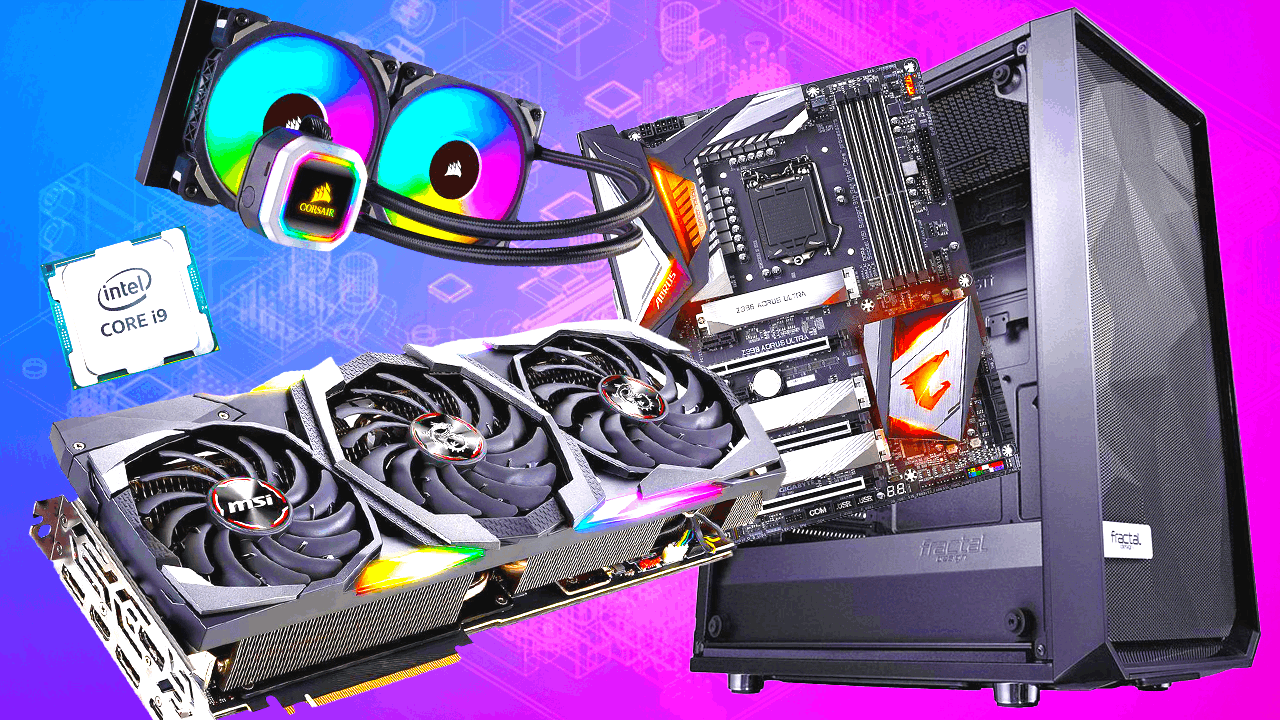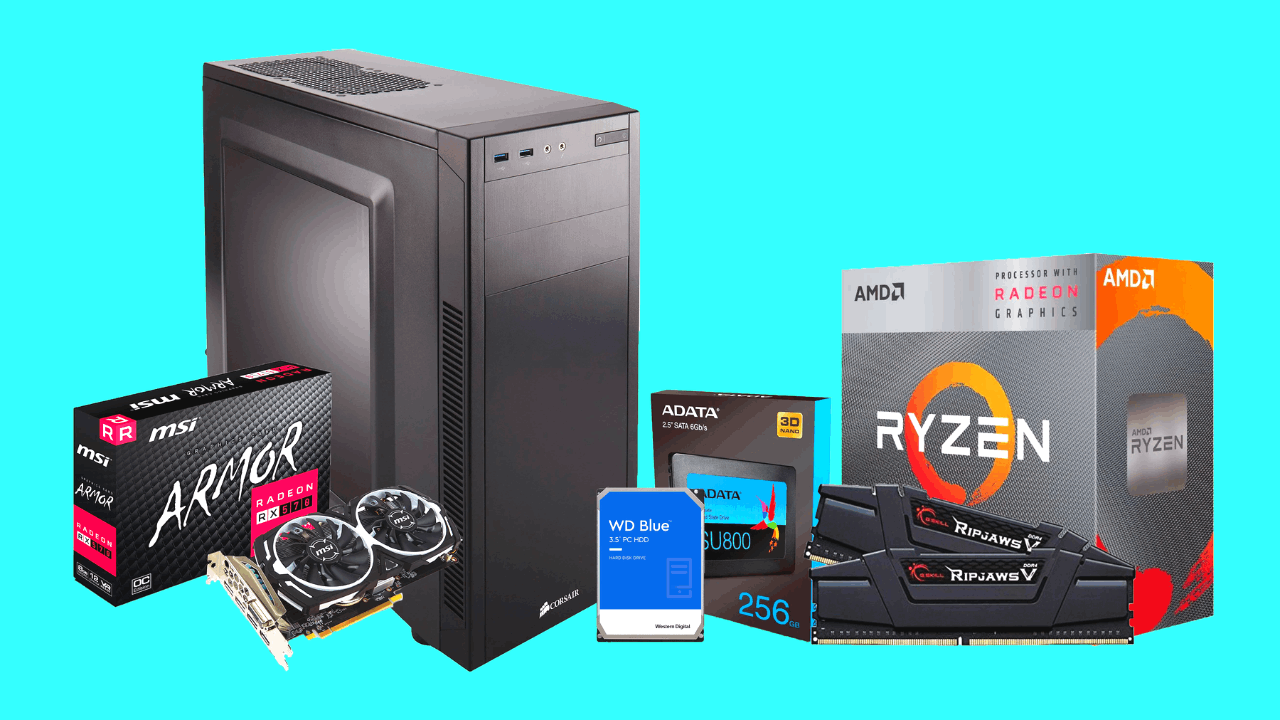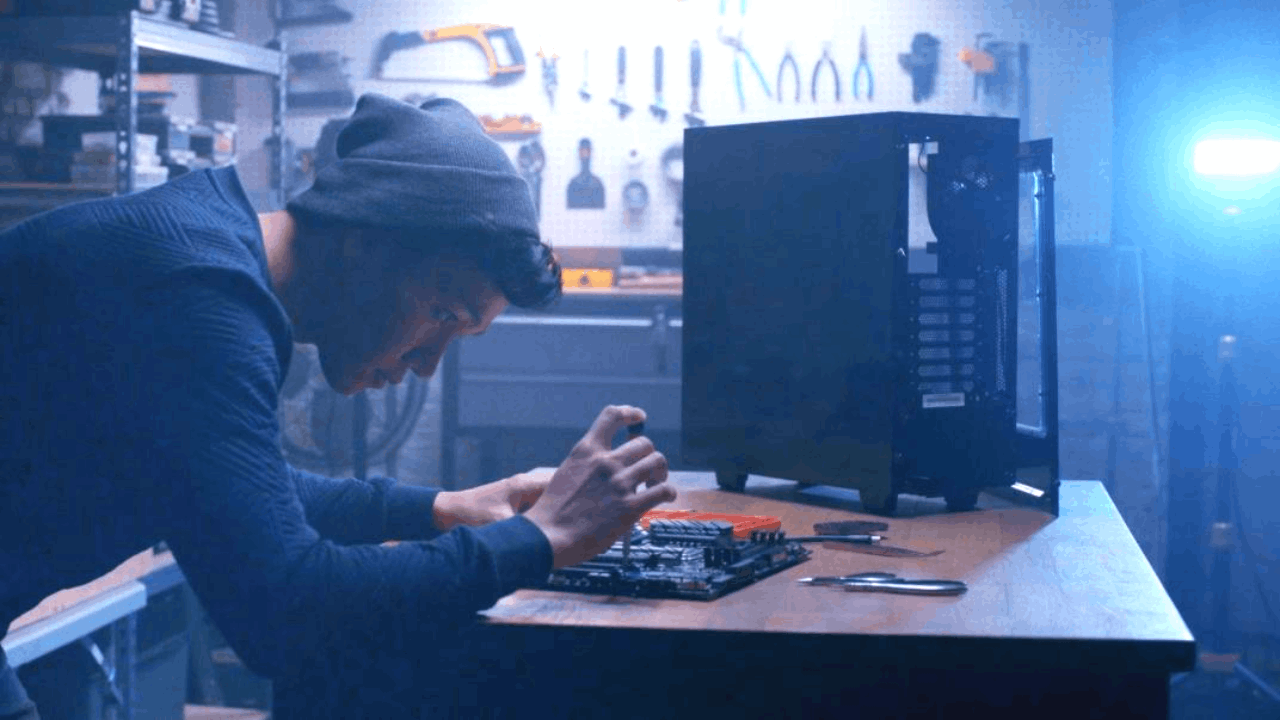Are you looking to build your own gaming computer but are on a budget? Building your own cheap gaming computer is possible and can be done without sacrificing performance.
With the right components and some creativity, you can easily assemble a powerful gaming PC that won’t break the bank.
In this guide, you’ll discover great tips for building your own cheap gaming computer.
- Build Your Own Gaming PC and Save a Bundle
- Build a Custom Gaming PC with Used Parts
- Pick the Right Graphics Card
- Choose Your Storage Wisely
- Don’t Skimp on Power Supply

Build Your Own Gaming PC and Save a Bundle
Building your own gaming computer is significantly cheaper than buying a pre-built one. By selecting the right parts and components, you can save hundreds of dollars compared to a similar pre-built model.

It provides a unique opportunity to save money while still achieving great gaming performance. The cost benefits of building your own computer are significant, as you can purchase components separately and tailor the build to fit your budget.
Additionally, you can choose higher-end components for the same price as pre-built computers, allowing for better performance without sacrificing quality.
Building your own PC offers significant cost savings over purchasing a pre-built model. While there are certainly some additional expenses that must be accounted for such as software licenses, the overall total cost of ownership is lower when building your own machine.
Unlock the Power of Customization and Upgradability
Building a gaming PC is a great way to get the best possible performance for your favorite games. You can upgrade your PC components as often as you like, giving you the ultimate flexibility when it comes to customizing your system.
Some of the most common upgrades for gaming PCs include processors, graphics cards, memory, storage devices, and more. Additionally, many gamers also enjoy upgrading their cases and motherboard to better suit their specific needs and requirements.
When it comes to upgrading your hardware, it’s a good idea to always consult with an expert before making any major changes or purchases. They will be able to give you advice on what upgrades will give you the best performance for your games. It’s also important to be patient while upgrading your PC – sometimes upgrades can take some time to see results.
Build a Custom Gaming PC with Used Parts
When it comes to building a cheap gaming computer, there are a few things that you can do to help keep the cost down. One of the best ways to do this is by buying used parts.

Look for reputable online stores or local computer shops that specialize in selling quality used components. You can also look for used parts on websites that cater to them.
Some social media groups offer used parts and sell them to their members. Make sure that you also check them out first and ask for photos before you even try to purchase them.
You can save money on your case, power supply, and hard drive by choosing used parts. There are many great used parts available on sites like eBay and Craigslist. By using used parts, you can build a great gaming computer for under $600.00.
Invest in an Affordable Processor
If you’re looking to build your own cheap gaming computer, investing in an affordable processor is a great way to save money while still getting good performance. The processor is the heart of your gaming computer and it’s important to choose one that can handle the games you want to play.
When looking for a processor, pay attention to the clock speed, number of cores, and cache size. Clock speed is how fast the processor can process instructions, while cores refer to how many calculations it can do at once. Cache size refers to how much memory the processor can access quickly.
When shopping for an affordable processor, you’ll want to look for one that offers good performance at a reasonable price. Intel and AMD both offer budget-friendly processors that are perfect for gaming on a budget.
Pick the Right Graphics Card
When building a cheap gaming PC, choosing the right graphics card is one of the most important decisions you will make.

A quality graphics card is essential for providing smooth, immersive visuals that will bring your games to life. The right graphics card will also ensure that your PC can handle the latest games, as well as any future titles you might want to play.
The first step in selecting a graphics card is to decide how much power and performance you need. If your budget is tight, you may want to look for an entry-level or mid-range card that can still provide good performance for the price.
Consider factors such as memory bandwidth, clock speed, core count, and features like Ray Tracing support when comparing cards. Additionally, it’s important to consider the cooling solution of each card. Some cards require more cooling than others and this can impact the overall cost of your build.
Get Enough RAM
RAM is the main memory used by a computer for short-term storage and retrieval of data and instructions. It allows games to run faster and smoother by loading large files quickly.
Having enough RAM impacts how well your games run, as well as how many applications you can keep open at once. Games often require more RAM than other programs because they need to store a lot of information to run smoothly. Make sure your system has enough RAM to handle modern games and multitasking.
For most use cases, 8GB should be enough, but 16GB will provide more futureproofing and better performance in some games and applications.
Choose Your Storage Wisely
Storage plays a key role in determining how quickly and reliably your games will run, so it’s essential to choose wisely.

There are two main types of storage used in gaming PCs – traditional hard disk drives (HDDs) and solid-state drives (SSDs). HDDs offer more capacity for less money but are slower than SSDs.
SSDs are much faster than traditional hard drives, so consider investing in one if you’re looking for a noticeable speed boost when launching programs and loading files. Alternatively, you can use a combination of both types of storage to get more bang for your buck.
If budget allows, you should get both, since the HDD can be used for bulk storage while the SSD serves as a high-speed boot drive with enough space to store frequently played games. If you only have limited funds, try to get at least 250GB of SSD capacity. This should provide enough space for several popular titles plus any necessary software/drivers/utilities that need quick access times.
You Don’t Need to Break the Bank to Get a Great Monitor
Monitors can be quite expensive so try to find one with decent specs at a reasonable price point. There are many different types of budget-friendly monitors on the market today, so you can find one that suits your needs and preferences.
Look out for features such as refresh rate, response time, and resolution when shopping around for monitors to ensure you get something suitable for gaming purposes without breaking the bank. Most budget-friendly monitors will have lower resolutions than more expensive models, but some can still offer 1080p resolution or higher at a fraction of the cost.
Buying an inexpensive monitor when building your own gaming PC is a great way to save money without sacrificing performance too much. Make sure to research each panel type carefully before making your purchase so that you get the best value for your money.
Don’t Skimp on Power Supply
A good power supply is essential for providing enough energy to power your gaming rig and its components. If you skimp on the power supply, it could lead to instability or even damage to your components due to inadequate power levels.

The power supply is often overlooked when building PCs on a budget, but it’s important not to skimp here – make sure it has enough wattage to cover all your components and provides reliable power delivery under load situations like gaming sessions. Look out for 80+ certifications from reputable brands like Corsair or EVGA.
A quality power supply will deliver clean and reliable electrical current which helps ensure that all components are receiving the optimal amount of electricity needed for peak performance. It will also help protect against sudden spikes in voltage which can seriously damage components if allowed unchecked.
Additionally, a more efficient power supply will generate less heat and noise, making for a more enjoyable gaming experience with cooler temperatures inside the case.
Master the Art of Cooling for Maximum Gaming Performance
Building your own gaming computer requires careful consideration of the cooling systems used to ensure that all components are adequately cooled and operating at optimal performance. There are several different types of cooling systems used in gaming computers, including air cooling, liquid cooling, and hybrid solutions.
If you want your system to perform well over time then cooling matters. This is why you need to invest in some case fans as well as an aftermarket CPU cooler. This will help keep temperatures down which will result in more consistent performance throughout long gaming sessions.
No matter which type of cooling system you choose when building your own gaming computer it’s important to do research beforehand so you understand exactly what each component does before making any purchasing decisions. This way, you’ll end up with an efficient solution that fits your needs perfectly.
Conclusion
With careful research, planning, and budgeting, you can create a powerful gaming computer that will give you years of entertainment and joy. It may take some time and effort, but the satisfaction of knowing that you created something with your own two hands is worth it in the end.
